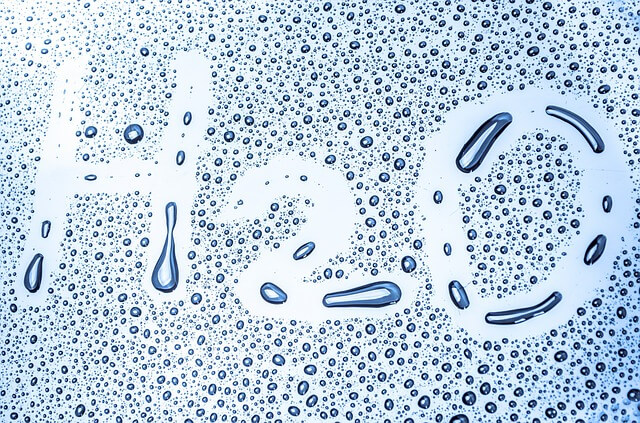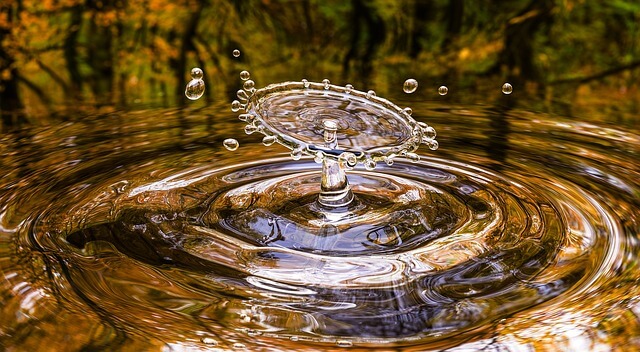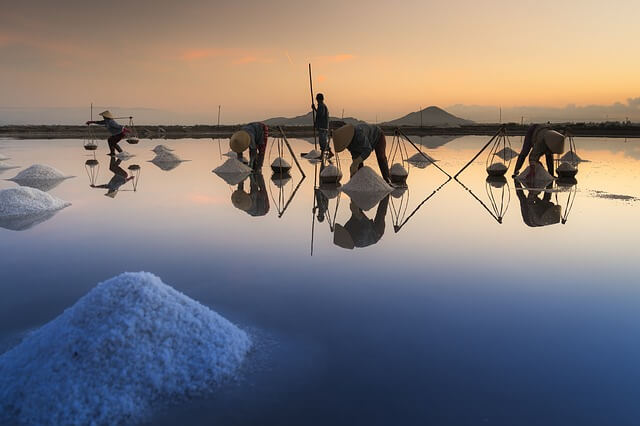Water is the second most important substance after oxygen for humans. Studying interesting facts about water, you can easily become sure of it.
Humans cannot live without water more than three days, after this period the vital activity of most organs stops. The tissues of the body undergo changes at the cellular level. Let’s take a closer look at the effect of water on humans.
A look at H2O from a medical point of view
People can consume distilled water in limited quantities. Otherwise, mineral salts are washed out from the body and numerous disorders can happen in the work of vital systems. We consist of water up to 80%.
Two days spent in the desert without water, strongly resemble the state of the “hangover”. Then visual hallucinations begin.
Caffeine and alcohol rapidly dehydrate our body. During our life we drink 9,415 gallons (35 tons) of water, meanwhile drinkers consume much more water.
Every year, up to 25 million people die from diseases transmitted through water. Losing more than 12% of water from total body weight can be risky and can even cause death without urgent medical care.
85% of diseases are water-related.
Interesting facts about water from a scientific point of view
All the studies only demonstrate that the water has not yet been fully studied. Its simple structure contains an incredible number of secrets and mysteries.
The common idea of water constantly changes, as new information its physical and chemical properties appears.
And what can science tell about this? Water absorbs radiation, infrared rays, and transmits a spectrum of light visible to the naked eye. Under certain conditions, freezing of H2O occurs also at a plus temperature.
The water cooled to 39 °F (4°C) can have the highest density. Protein forms without water do not exist. The transition from the liquid state to the solid increases the volume of the liquid, which is not characteristic of other substances.
In nature, you can’t find H2O in its pure form. Being an excellent solvent, water a lot of dissolved substances contains in its compound. In comparison with other liquids, this one has the greatest heat capacity.
Scientists have found five states of water in the liquid phase and fourteen states of it in the frozen state. Hot H20 turns into ice faster than cold one.
Only this natural resource can be simultaneously in a solid, liquid and gaseous state of all the substances on the planet.
Water can be used as a kind of natural mascot. The liquid has memory, it is capable of accumulating positive or negative energy in itself. Water flowing near slaughterhouses or similar places is poisoned on the energy level. Dirty groundwater needs several thousand years for the natural purification.
The Nile is the only river on the earth, whose source begins at the equator, from which the current directs.
If all the glaciers melt, they will flood 1/8 of the land surface, and the world ocean level will rise by 213 feet (65 meters).
Nutrients contained in the world’s oceans are twenty times higher than the annual volume of crops throughout the world.
You can find the world’s most expensive water in Los Angeles. A bottle with an exclusive drink can boast of a decoration with Swarovski crystals. All this luxury costs 90 dollars.
Taking this natural resource instead of other drinks, can help to reduce the appetite and make you slimmer.
Reserves of water contained in the earth’s mantle are ten times more than on the surface of the planet.
About one billion people suffer from lack of drinking water.
The freshwater reserves in Finland are the cleanest in comparison with the results of the comparison conducted by UNESCO among 122 countries.
Water has a very complex chemical composition due to its high dissolving power. It is possible to identify certain mineral and organic substances dissolved even in rainwater, which only fall out in the form of precipitation.
The molecular formula of water is H2O.
The molar mass of water is 18.01528(33) g/mol.
Water melting point is 0 °C, 32 °F (273.15 K).
Its boiling point is 100 °C, 212 °F (373.15 K).
Water acidity (pKa) is 15.74.
Its basicity (pKb) is 15.74.
Water refractive index is (nD) 1.3330.
Its viscosity is 0.001 Pa s at 20 °C.
Its crystal structure is hexagonal, meanwhile its molecular shape is bent.
Substances that are most common in water
Rigid salts of calcium and magnesium are mineral compounds, which natural water wash out from soil. They endow water with, so-called, rigidity, because of them there is incrustation, white stains on the plumbing and plumbing deposits in the bath or in the shower.
Regular use of water with a high content of hard salts can cause joint diseases and urolithiasis. On average, tap water contains about 0.00039- 0.000455 oz/gal (3.0-3.5 mg / l). It is not difficult to resist such pollution, it is sufficient to choose the optimal filter for water purification from hard salts.
Fluorine (F) is one of those elements which are quite useful for us. Water gets special fluorination to increase its content, as with its deficiency, tooth decay develops. The recommended content of fluoride in water should be no more than 0.000156 oz/gal (1.2 mg / l).
Manganese (Mn) can rarely be without divalent iron. It comes to the water most through deposits in the pipes of manganese bacteria, also through soil fertilizers. Rarely the content of this metal exceeds 0.00026 oz/gal (2 mg / l), but the acceptable rate for human health is no more than 0.000065 oz/gal (0.5 mg / l). In case of manganese poisoning, the liver is affected and parkinsonism, symptomatically similar to Parkinson’s, can develop because manganese has a negative effect on the human brain.
Selenium (Se). Despite the assertion that selenium is useful, a large amount of selenium can lead to acute poisoning, accompanied by a violation of the gastrointestinal tract, chills, severe abdominal pain. With regular use of water with increased content of selenium, a human being can get selenosis. This illness can lead to changes in the quality of nail plates (fragility, thinning), hair (discoloration, baldness), skin (dermatitis) and teeth (caries). The content of selenium in drinking water should not exceed 0.0000013 oz/gal (0.01 mg / l).
Molybdenum (Mo). Rarely, the molybdenum content exceeds 0.0000013 oz/gal (0.01 mg / l), usually at the locations of molybdenum-containing ores. In this case, natural waters can contain it at a concentration of up to 0.026 oz/gal (200 mg / l). Water saturated with molybdenum has an astringent taste. Nevertheless when the content of this element in water is not above the norm of 0.0000091 oz/gal (0.07 mg / l), you will not feel any specific taste. When using molybdenum water with a concentration of 0.0013- 0.00195 oz/gal (10-15 mg / l), your liver can become bigger, you may feel joint pain in the hands and feet, serious disorders of the kidneys and digestive system may appear.
Nitrates are salts of nitric acid, which usually fall into surface and groundwater, as pollution from agricultural fertilizers. If water contains nitrates above the norm, diseases of the blood, cardiovascular system and toxic poisoning can develop.
Hydrogen sulphide is a gas that can give an unpleasant smell of putrid eggs to water if its concentration exceeds 0.0000065 oz/gal (0.05 mg / l). When water gets enrichment with oxygen, hydrogen sulphide oxidizes, and the unpleasant odor disappears. Hydrogen sulphide is not dangerous, its presence only worsens the organoleptic characteristics of water. However, sulfides appear in the oxidation process, and they are toxic to humans. For example, a single dose of 0.35-0.5 oz (10-15 g) of sodium sulfide leads to a lethal outcome.
Substances that appear in water after treatment with reagents
Coagulants, for example, aluminum sulphate. Aluminum is a common metal that almost always exists in natural water, but most often in very small quantities. However, during the purification of water, the use of aluminum sulphate is widespread, which increases the ingress of aluminum into the organism. It is revealed that in large quantities, aluminum causes damage to the nervous system. If the body has accumulated a critical dose of this metal, it can cause muscle paralysis, stopping breathing, stopping the work of the heart, and as a result, death.
Flocculants, for example, polyacrylamide. Flocculants are chemical reagents that help precipitate small particles.
Residual tripolyphosphates, which protect water pipes from corrosion.
Residual chlorine. Chlorine (Cl) and chlorine compounds enter the water at the cleaning stations. It is added as a disinfectant. In small amounts, chlorine can cause irritation of the mucous membranes of the mouth, eyes, esophagus. At high concentrations, chlorine is toxic and causes a number of diseases. It kills not only pathogenic bacteria, but also was a chemical weapon during the war. Chlorinated water is harmful and requires additional cleaning, but since almost all tap water contains chlorine, it’s better to use household filters to purify water.
Substances that are in the water along with wastewater: various household, industrial waste, mineral fertilizers.
Pesticides enter the tap water through soil contamination. They are extremely dangerous for animals and humans. Due to the impact of pesticides, many species of animals and plants have already disappeared from the earth. When poisoning with pesticides, there are signs of a disorder of the gastrointestinal tract, allergic reactions, diathesis. With strong impact, a lethal outcome is possible.
Heavy metals
Mercury (Hg) does not usually exceed 0.0000065 oz/gal (0.5 mg / l) in natural water, but this is quite a high level for humans. Nevertheless due to technogenic and local household pollution, the mercury level can be much higher. Admissible is 0.000000065 oz/gal (0.0005 mg / l). Mercury damages all tissues of the human body with which it contacts, therefore it is extremely dangerous. To a greater extent, mercury affects the kidneys and the nervous system. If a person takes a single dose of mercury above the marginal rate, he can damage own psyche as well as his ability to touch, hear, talk. There also can be convulsions, cardiovascular system collapses, pressure falls to a level when vital activity is impossible, more than 0.017 oz (500mg) of mercury can be fatal. Even small doses of mercury can cause premature birth, fetal fetus deformity during pregnancy.
Zinc (Zn) can be in many food products, as well as it is in the form of salts and compounds in water. If the content of zinc salts in water exceeds the norm, a human being can get considerable damage. He can get severe acute single poisonings, fever, nausea, vomiting, disruption of the gastrointestinal tract can occur. In the case of regular poisoning, erosions can develop on the gastric mucosa and blood cholesterol may increase. The level of zinc salts in water should not exceed 0.00039 oz/gal (3 mg / l). Most often, there is not more than 0.00000065 oz/gal (0.05 mg / l) in natural zinc water, but often the concentration increases due to the passage of water through zinc-containing water pipes.
Cadmium (Cd). Heavy metal, which usually unites with zinc in nature. In natural waters, it can occur in places where zinc enters the sewage in the areas of chemical and metallurgical plants. With regular use of water with an increased content of cadmium, it accumulates and affects the nervous system, leading to anemia and destruction of bone tissue due to disruptions in the work of phosphorus-calcium metabolism.
Detergents fall into the surface water with industrial wastewater.
Interesting facts about water indicate that we should treat it carefully. Only 1 percent of its total amount is suitable for drinking.








